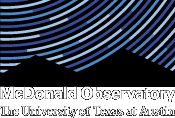Galactic “Wind” Stifling Star Formation is Most Distant Yet Seen
AUSTIN, Texas — For the first time, a powerful “wind” of molecules has been detected in a galaxy located 12 billion light-years away. Probing a time when the universe was less than 10 percent of its current age, University of Texas at Austin astronomer Justin Spilker’s research sheds light on how the earliest galaxies regulated the birth of stars to keep from blowing themselves apart. The research will appear in the Sept. 7 issue of the journal Science.

